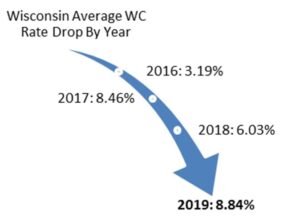Understanding The New UK Law For Taxi Drivers

Introduction
Taxi law…..
In the ever-evolving landscape of the UK’s transport sector, staying abreast of the latest laws and regulations is paramount for taxi drivers.
The introduction of new legislation aimed at enhancing the safety, accessibility, and professionalism within the taxi industry necessitates a thorough understanding by all stakeholders.
This article aims to demystify the recent changes, ensuring that taxi drivers are not only compliant but also positioned to offer the best service to their passengers.
Here’s what we’ll cover:
The balance between drivers’ rights and their service obligations.Legalities surrounding CCTV installation in taxis.Valid reasons for service refusal.Accessibility standards for all passengers.Expectations of passenger conduct.Child and pet transportation policies.
But first, let’s dive in.
Taxi Law: Taxi Drivers’ Rights And Obligations
Taxi drivers, the backbone of urban mobility, navigate a complex web of rights and obligations.
Central to the new law is the delineation of circumstances under which drivers may accept or refuse passengers.
Drivers retain the autonomy to make these decisions, but they must ensure their choices are legal and fair.
This delicate balance ensures that the industry respects drivers’ safety and preferences while keeping public access to transportation open and unhindered.
Interestingly, what does this mean for you?
The Role of CCTV In Taxi Safety
In an era where safety can never be overstated, the new law empowers taxi drivers to install CCTV systems within their vehicles.
This provision aims to safeguard both the driver and passengers, creating a transparent record of events.
However, this technological leap is not without its guidelines.
Drivers must navigate the intricacies of privacy laws, ensuring that the implementation of CCTV does not infringe upon individual rights but rather enhances the collective security of all parties involved.
Learn more about car insurance options for taxi drivers equipped with CCTV.
So, how can we ensure compliance while protecting privacy?
Criteria For Refusing Service
The right to refuse service, while necessary, is bound by strict criteria under the new law.
Drivers are urged to exercise this right judiciously, basing decisions on objective, legitimate reasons such as passenger behavior, safety concerns, or legal restrictions.
This section of the law emphasises the industry’s commitment to non-discrimination, ensuring that service refusal is not arbitrary but rather for justifiable, legal reasons.
Discover strategies for very cheap car insurance while adhering to the new refusal criteria.
Now, what constitutes a valid reason for refusal?
Taxi Law: Accessibility Requirements
A cornerstone of the new legislation is its focus on inclusivity.
Taxi services must now meet rigorous accessibility standards, ensuring that vehicles are equipped to accommodate wheelchair users and service animals.
This move not only aligns with broader societal values of equality and accessibility but also signifies the industry’s adaptation to the diverse needs of the modern passenger.
Find out how this affects insurance for electric vehicles, many of which are taxis.
But wait, there’s more.
Passenger Conduct Expectations
The symbiotic relationship between taxi drivers and passengers is underpinned by mutual respect and understanding.
The new law codifies expectations of passenger conduct, including prohibitions against smoking and the necessity for timely fare payment.
These guidelines serve to maintain a respectful, safe environment, fostering positive interactions between drivers and passengers.
Explore how to navigate these changes effectively with tips for young drivers.
This overview of the new law’s first half underscores the government’s commitment to enhancing the taxi industry’s standards.
By navigating these regulations wisely, taxi drivers can ensure compliance while elevating the quality of service offered to passengers, thereby strengthening the industry’s reputation and reliability.
Remember, staying informed is key to adapting successfully to these changes.
Safety Measures For Children And Pets
Now, let’s talk about the youngest passengers.
For children under three, the law mandates they must be in an appropriate carrier or secured in the rear seat.
And what about pets?
While taxi drivers may have the option to refuse non-service animals, they must accommodate service animals without exception.
Here’s a critical point to consider:
These requirements not only ensure safety but also impact the types of insurance coverage a taxi might need.
Curious about how this affects your policy?
Check out our comprehensive vs third-party coverage guide.
The Impact Of New Laws On Taxi Services
So, you might be wondering, how do these changes impact the industry as a whole?
These laws are set to refine service standards, possibly altering fare structures and the overall quality of service.
Taxi operators might need to invest in vehicle upgrades or driver training to meet these new requirements.
Looking for ways to offset these costs?
Our money-saving tips on car insurance could be just what you need.
Compliance And Enforcement
But here’s the kicker:
Ensuring adherence to these new standards is crucial.
Regulatory bodies will closely monitor compliance, with penalties ready for those who fall short.
Why does this matter?
Understanding and following these laws is key to avoiding fines and maintaining a stellar reputation in the industry.
Feeling unsure about your current insurance policy’s compliance?
Learn how switching your car insurance could be beneficial.
Conclusion
Wrapping up, navigating through the new taxi laws may appear challenging, but staying informed is crucial.
These regulations are designed to enhance the taxi service landscape, promising benefits for both drivers and passengers.
By complying with these standards, taxi services can continue to provide high-quality, respectful, and compliant service.
Interested in exploring more on the topic?
Dive into related reads:
Remember, staying ahead of the curve with these new regulations not only ensures compliance but also positions your taxi service as a leader in safety and customer satisfaction.





